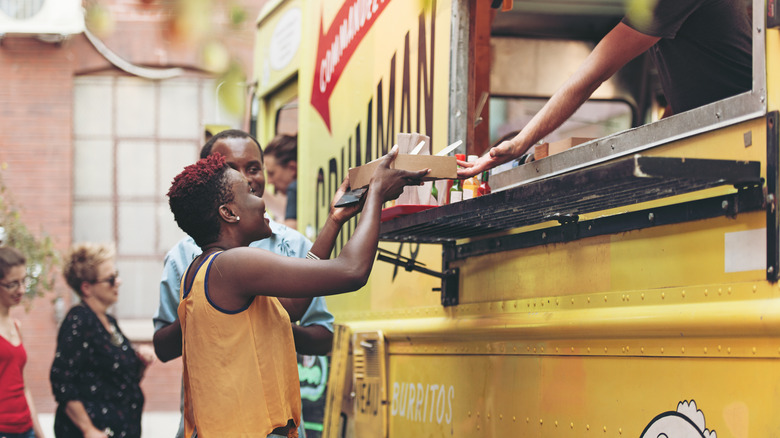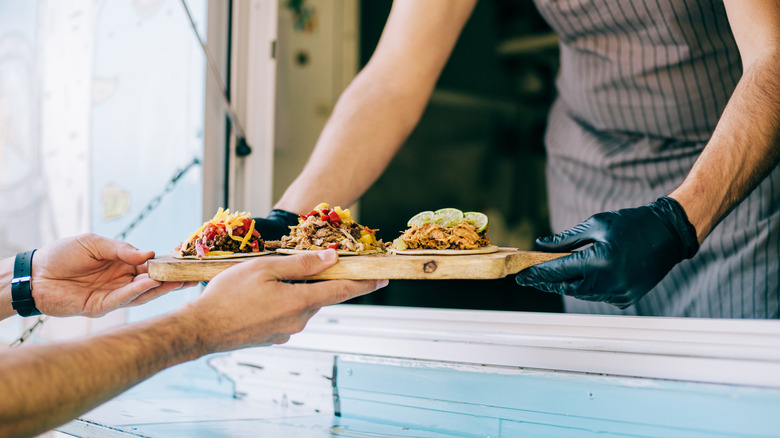The Red Flag You Shouldn't Overlook When Eating At A Food Truck
From the mouthwatering aroma to the diverse array of nostalgic eats, there's something to be said about ordering from a good food truck. They're a terrific option for grabbing a delicious meal on-the-go, and, depending on where you live, food trucks can be a staple of the local dining scene. There are more than 36,000 of them in the U.S., with the LA food truck network and Austin's bustling offerings being two of the major hubs. But, when it comes to opting for these tasty meals on wheels, experts say there's one major red flag to always look out for: lukewarm food.
"Temperature problems are one of the most common violations in food trucks," Dr. Jonathan Fielding, Los Angeles County's former director of public health, told CNN, with the outlet providing some guidance on what to look for when getting mobile food. "Salads and deli sandwiches should feel like they're straight out of the fridge, while soup and burgers should be piping hot."
Being handed a tepid meal doesn't sound too appetizing. But, beyond preferences of tastebuds, lukewarm plates of food may pose a greater risk than you think.
Why food temperature is very important
If your food is not presented at a safe temperature, there could be unsavory bacteria lurking on your favorite food truck eats. Temperature problems can often present major health concerns because they put food into what the industry refers to as the "Danger Zone." According to the U.S. Department of Agriculture's Food Safety and Inspection Service, the "Danger Zone" includes temperatures of 40 degrees Fahrenheit and up (for cold food) and 140 degrees Fahrenheit and under (for hot food). Bacteria like salmonella and staphylococcus grow quickly at these temperatures and are able to double in number in a mere 20 minutes.
For example, a container of potato salad that's left out of the refrigerator for too long may develop bacteria and cause a foodborne illness. So, for those looking to avoid a bad case of food poisoning, be wary of cold food that's not served cold and hot food that's not served hot. But, that's not the only red flag to be on the lookout for.
Other red flags to be aware of at food trucks
In addition to food not being heated or cooled correctly, food trucks should also be adhering to basic cleanliness standards, just like a brick-and-mortar restaurant would. Namely, food handlers should have good personal hygiene — such as wearing gloves and having their hair pulled back — and the food truck itself shouldn't be visibly dirty. The overall appearance of a food cart can be a major red flag. For instance, messy sinks, piles of dirty dishes, and visible bugs are all fairly obvious bad signs.
Similar to restaurants, food trucks are inspected annually and must be licensed in order to operate legally. So, if a food truck's license and/or inspection grade aren't visible, consider asking the truck's operator to see them if you are concerned.
Overall, if a food truck is lacking in any of these areas, your best bet is to skip it altogether and move on to the next one. Your meal may actually taste better and will likely be safer for you, too.



